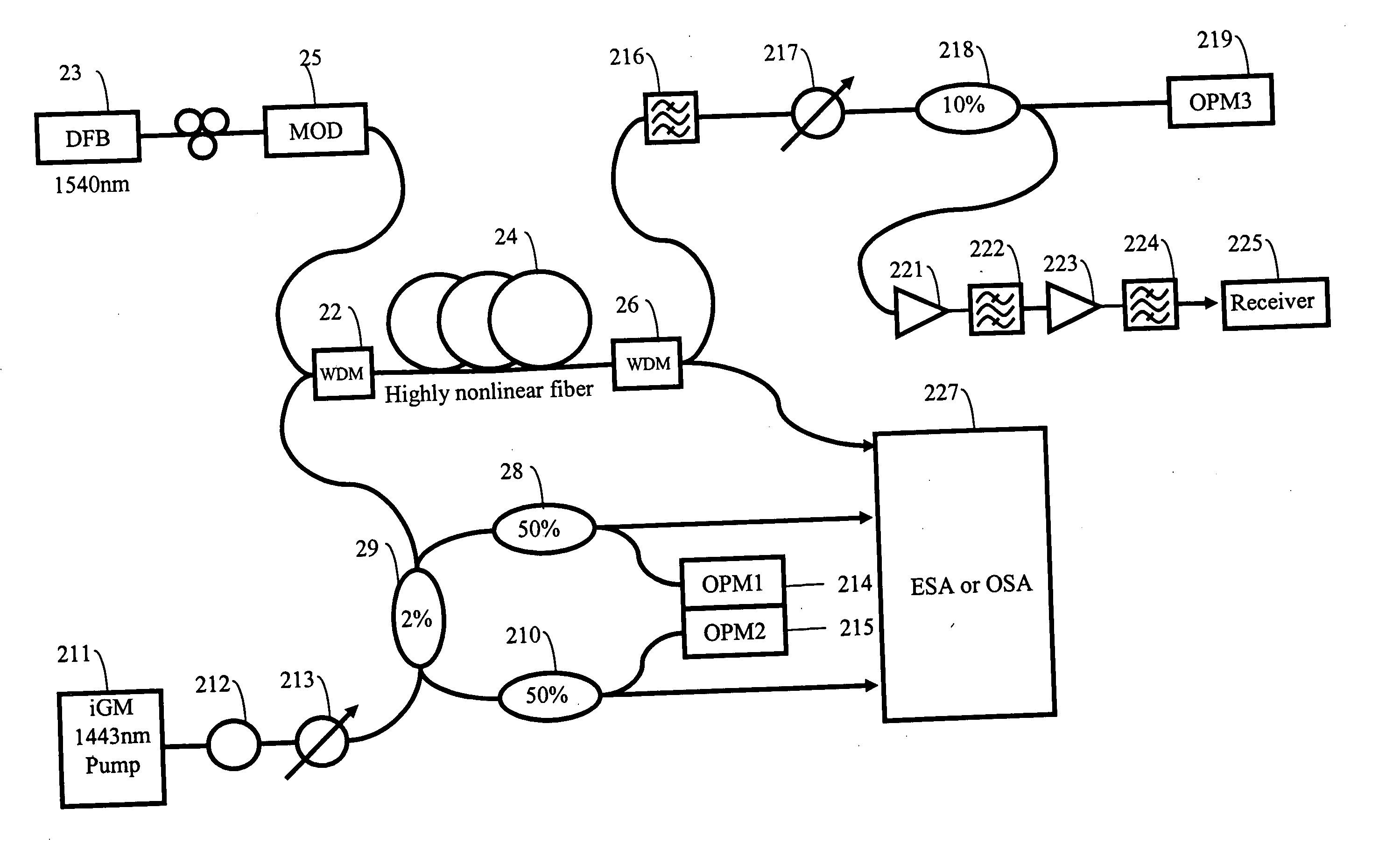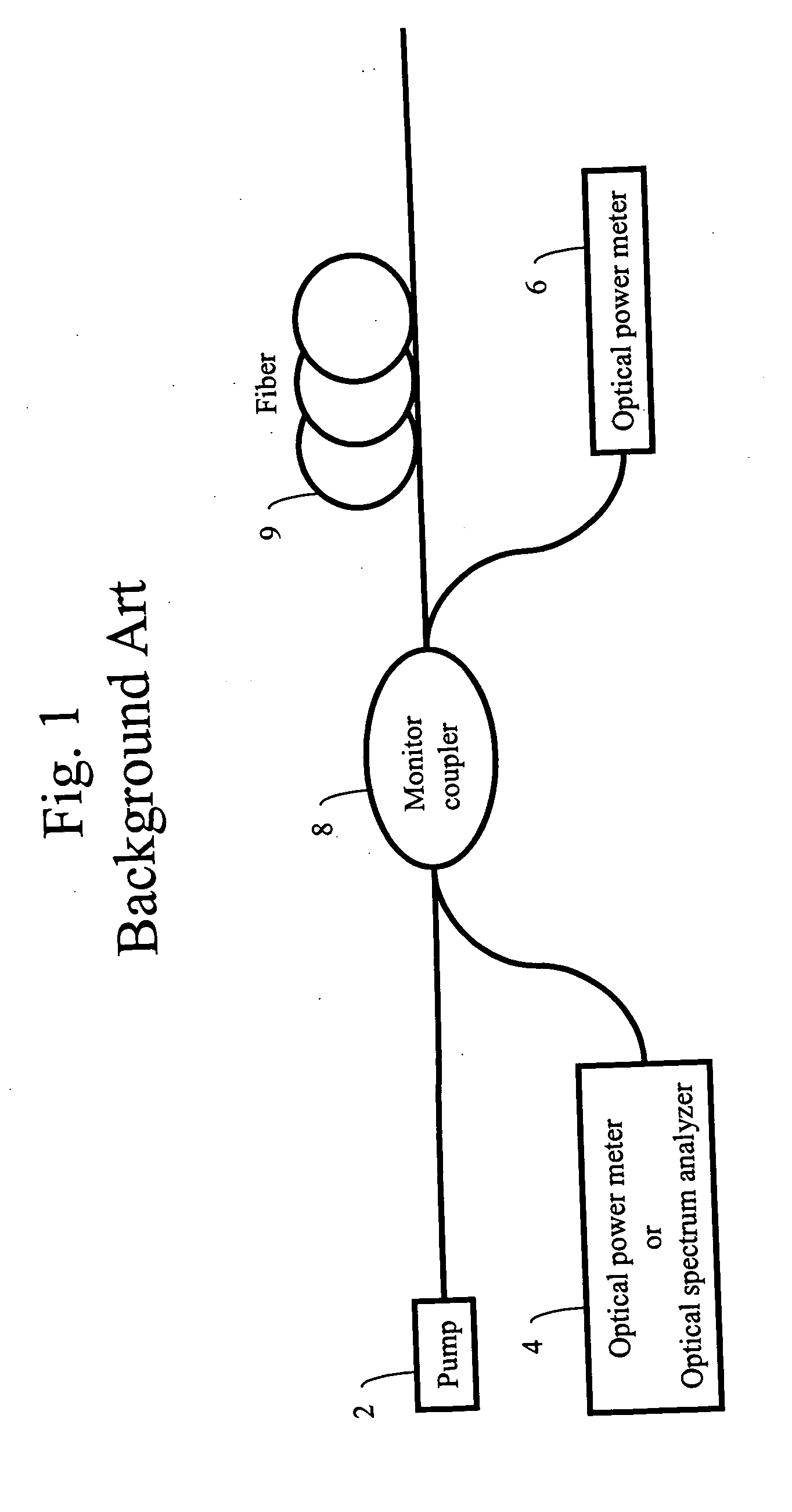Raman amplifier, pump source for use in a raman amplifier and method for amplifying an optical signal
a technology of amplifier and optical pump, which is applied in the direction of optics, electromagnetic repeaters, instruments, etc., can solve the problems of power penalty, power penalty, and the benefit of increasing the signal power beyond a predetermined amount, and achieve the extra optical power required
- Summary
- Abstract
- Description
- Claims
- Application Information
AI Technical Summary
Benefits of technology
Problems solved by technology
Method used
Image
Examples
Embodiment Construction
[0039] Referring now to the drawings, FIG. 2 illustrates a block diagram of a measurement setup that may be used according to the present invention for selecting suitable pumps and accurately determining SBS levels. A pump source 211 is a 1443 nm iGM (inner-grating stabilized multimode pump laser) such as that described in U.S. Pat. No. 6,614,823 entitled “Semiconductor Laser Device Having a Diffraction Grating on a Light Reflection Side”, the entire contents of which being incorporated herein by reference. The iGM laser is a low RIN pump laser with a built-in isolator. The output of the pump 211 is provided to an external depolarizer 212 made of 10 meters of polarization maintaining fiber. The output of the external depolarizer 212 is provided to a variable optical attenuator 213 that is used for changing (manually or under computer control) an input power to the amplifier fiber 24 (which in this case is a highly non-linear fiber) under constant pump output power so as to keep the ...
PUM
| Property | Measurement | Unit |
|---|---|---|
| length | aaaaa | aaaaa |
| length | aaaaa | aaaaa |
| zero-dispersion wavelength | aaaaa | aaaaa |
Abstract
Description
Claims
Application Information
 Login to View More
Login to View More - R&D
- Intellectual Property
- Life Sciences
- Materials
- Tech Scout
- Unparalleled Data Quality
- Higher Quality Content
- 60% Fewer Hallucinations
Browse by: Latest US Patents, China's latest patents, Technical Efficacy Thesaurus, Application Domain, Technology Topic, Popular Technical Reports.
© 2025 PatSnap. All rights reserved.Legal|Privacy policy|Modern Slavery Act Transparency Statement|Sitemap|About US| Contact US: help@patsnap.com



